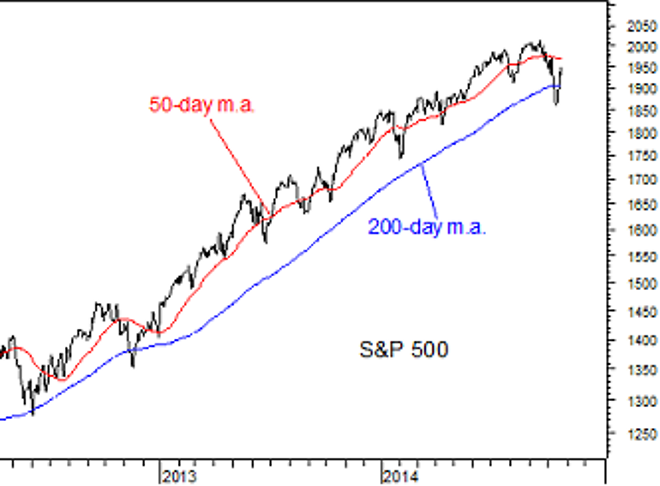Advertisement
Advertisement
Buy the Dip or Sell the Rally
Updated: Aug 25, 2015, 03:00 GMT+00:00
I’ve been around a long time, through many economic and market cycles, and I don’t recall a time when the bull/bear debate had such strong arguments on
I’ve been around a long time, through many economic and market cycles, and I don’t recall a time when the bull/bear debate had such strong arguments on both sides.
The bullish case:
- The economic recovery from the Great Recession continues.
- The Fed promises to keep rates low until the economy strengthens more.
- Earnings continue to meet or beat Wall Street estimates.
- Corporations are buying back their stock, decreasing the supply.
- With interest rates so low, there’s no place for investors other than in stocks.
- Oil and energy costs are plunging, leaving consumers with more disposable income.
- The market has finally experienced the overdue 10% correction.
- Favorable seasonality has arrived.
- The S&P 500 breaking below its long-term 200-day m.a. was a false alarm.
The bearish case:
- The recovery remains as anemic as it has been for the last five years. The Fed is ending QE stimulus on which the economy has been dependent. Every time the Fed let QE stimulus expire, the market and economy stumbled until they re-instated it.
- The economies of America’s largest global trading partners are in trouble. The 18-nation euro-zone is potentially even sliding back into recession. Global slowdowns will drag the U.S. economy down.
- That earnings are beating Wall Street’s estimates is only a measure of Wall Street’s ability to obtain guidance from companies. Actual earnings growth is slowing.
- That corporations are using their cash to buy back their stock, artificially manipulating the P/E ratio, rather than investing in growth, is not a positive for the economy. It’s an activity usually seen near the end of bull markets.
- The U.S. stock market is at high valuation levels even for times when the economy was already super strong and growing.
- On the 200-day m.a. being a false alarm, not so far on the broad NYSE Composite.
Strong arguments on both sides.
The financial media is excitedly pointing out that this is the best week for the S&P 500 since July 2013. Just two weeks ago, it was the worst week since May 2012.
My technical indicators have improved, but have not yet issued an all-clear signal, suggesting this still may be just a deserved bounce, after an unusual four straight down weeks that had the market short-term oversold, but may not be the end of the correction.
The answer one way or the other should not be many days away.
Sy is president of StreetSmartReport.com and editor of the free market blog Street Smart Post. Follow him on twitter @streetsmartpost.
About the Author
FX Empire editorial team consists of professional analysts with a combined experience of over 45 years in the financial markets, spanning various fields including the equity, forex, commodities, futures and cryptocurrencies markets.
Advertisement
